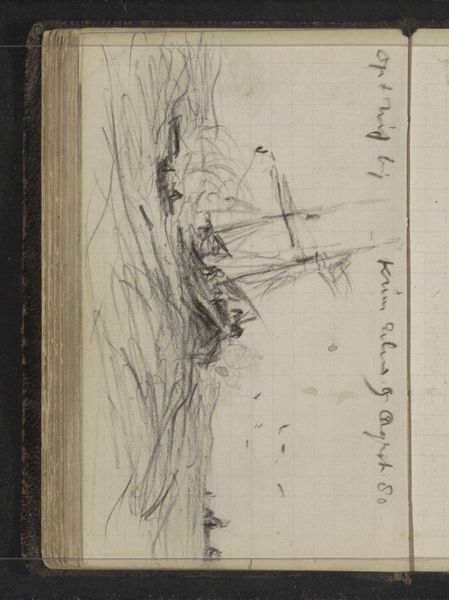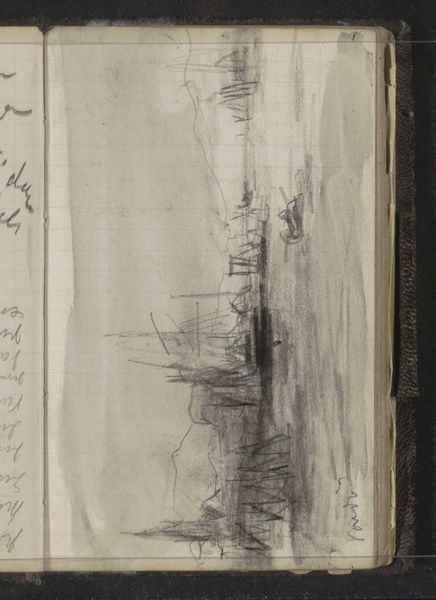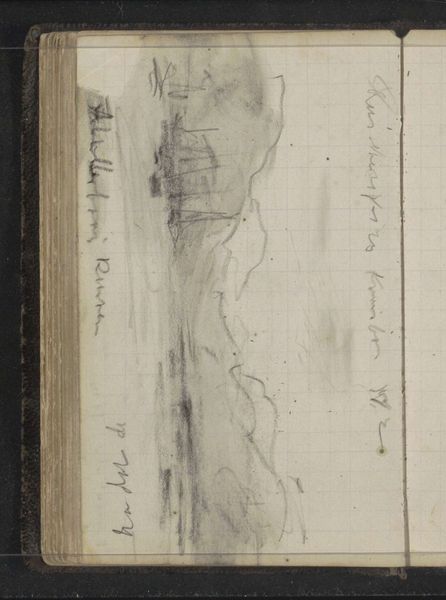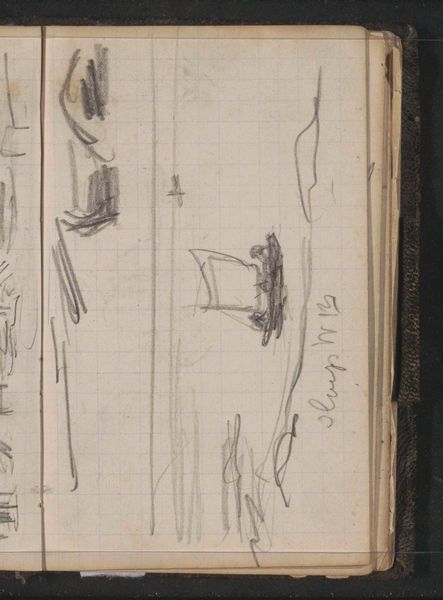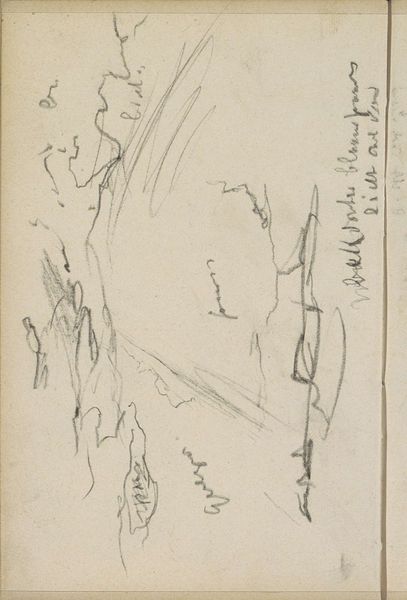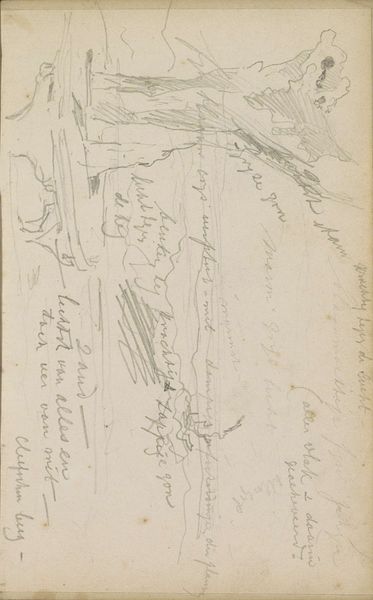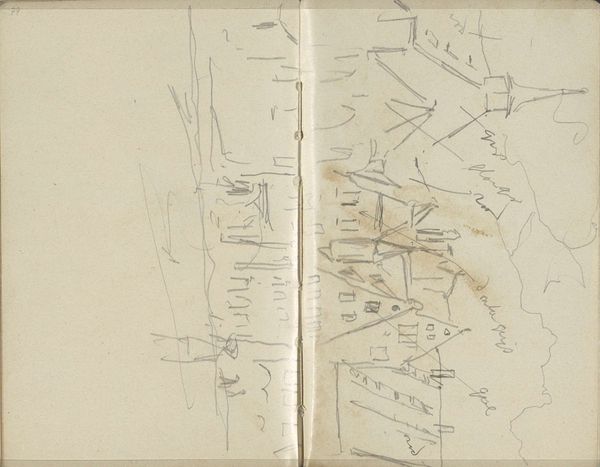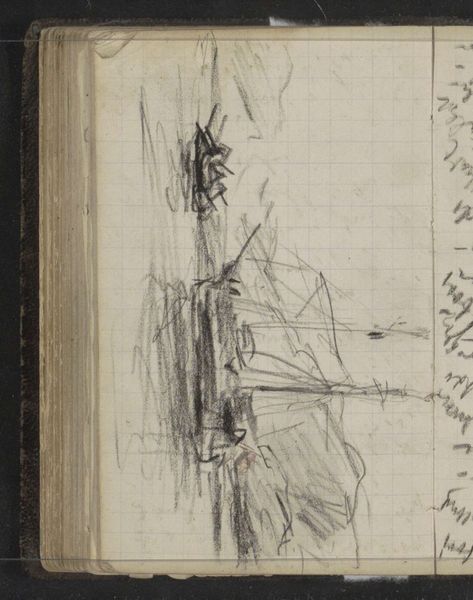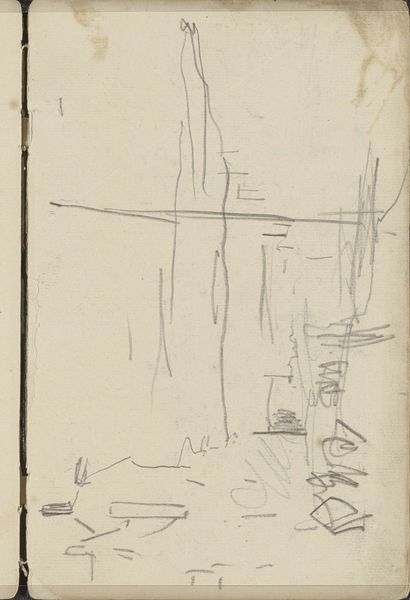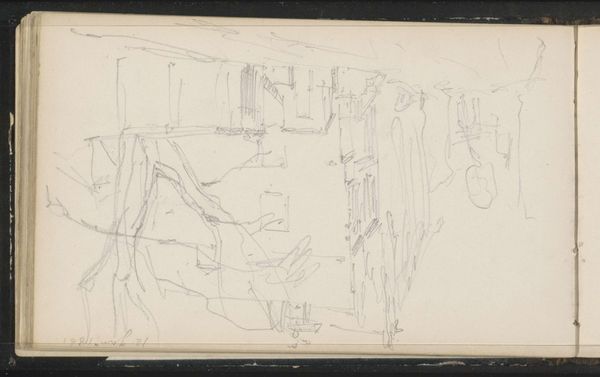
Gezicht op de Russische nederzetting te Malye Karmakuly, Nova Zembla c. 1880 - 1888
0:00
0:00
drawing, graphite
#
drawing
#
sketch book
#
landscape
#
graphite
#
northern-renaissance
#
realism
Copyright: Rijks Museum: Open Domain
Curator: This delicate graphite drawing invites us into a stark and isolated scene. Created circa 1880-1888, it's called "Gezicht op de Russische nederzetting te Malye Karmakuly, Nova Zembla", or "View of the Russian settlement at Malye Karmakuly, Novaya Zemlya" by Louis Apol. It’s currently held at the Rijksmuseum. What's your immediate sense of it? Editor: Brrr, I feel a chill just looking at it. It's all misty greys and sharp, spiky forms. There's a real sense of… displacement here, of a fragile human presence against the vast, indifferent backdrop of nature. Is there symbolism connected to arctic exploration or remote territories depicted in this style? Curator: Apol never actually visited the arctic. He used accounts from polar expeditions and sketches to recreate the arctic conditions. While it feels rooted in the traditions of landscape art and realism, he imbues it with his own sensibilities. To me, there is also something deeply symbolic of man vs nature, showing how the tiny settlement contrasts against its backdrop. Editor: It absolutely resonates with that struggle. The graphite lines are so fine, like threads barely holding the image together. You see tiny buildings huddled together as symbols of the human drive to colonize, though it all feels incredibly exposed and tenuous here. There is a certain arrogance, almost like little specks on the infinite map that dominates its narrative. The sketchy, unfinished style suggests not just a specific place, but an enduring symbolic representation of ambition clashing with unforgiving environments. Curator: The medium feels essential to its impact too. Graphite allows for such nuance in depicting snow and mist. It also perfectly embodies fragility. This all brings us back to those tensions and anxieties we as humans hold, as small fleeting individuals, and reminds us of those landscapes outside ourselves. Editor: Precisely! That use of graphite conveys ephemerality which amplifies those feelings. And, it adds such psychological depth—evoking not just a location but the internal state, the ambition and perhaps even fear of facing an indomitable landscape. The sketchbook feel emphasizes that personal and perhaps anxious touch. Curator: Yes, precisely, that inner emotional landscape becomes entangled with this exterior one! Editor: Well, after contemplating Apol's stark depiction, I must say it carries quite an ominous chill—making us deeply contemplate both our grand designs and our fragile hold on our dreams. Curator: It's amazing how a simple graphite drawing can transport you to such a remote and unsettling place.
Comments
No comments
Be the first to comment and join the conversation on the ultimate creative platform.

